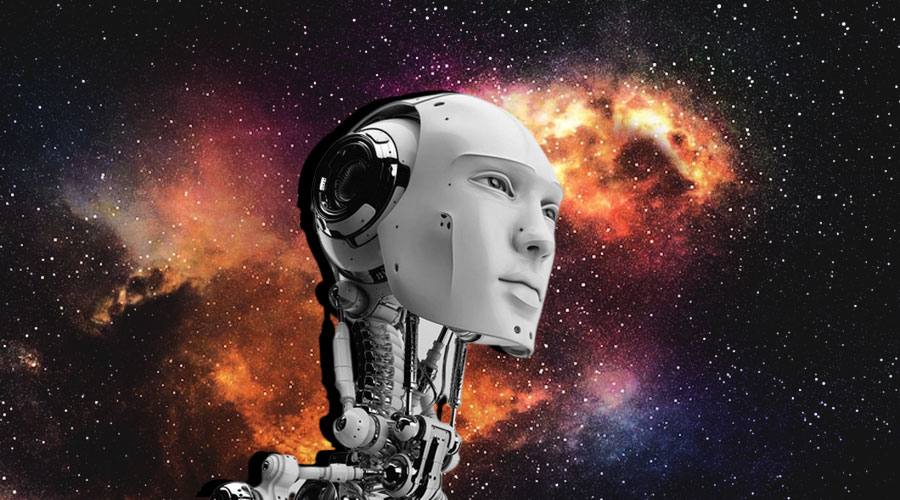In recent years, the realm of artificial intelligence (AI) and robotics has experienced a transformative evolution. We’ve gone beyond the realm of science fiction, where robots were mere figments of our imagination, and entered an era where they are integrated into our daily lives. From chatbots helping with customer service inquiries to autonomous cars navigating our streets, AI-driven machines are becoming a part of our daily existence. But what happens when these machines become more than tools and start to resemble companions?
The concept of robotic companions, robots designed to interact with humans on a personal and emotional level, is no longer confined to the pages of science fiction novels. Companies are investing heavily in developing robots capable of providing companionship to individuals of all ages, from children to the elderly. These robotic companions are designed to assist, entertain, and even offer emotional support. However, for these machines to fulfill their intended roles effectively, a critical element must be addressed: trust.
Building trust in robotic companions is a multifaceted challenge that involves both technological advancements and a deep understanding of human psychology. In this blog post, we will explore the complex world of human-robot interaction and delve into the key factors that contribute to establishing trust in our mechanical counterparts.
Understanding Human-robot Interaction
To comprehend the nuances of building trust in robotic companions, we must first understand the dynamics of human-robot interaction (HRI). HRI is a multidisciplinary field that examines how humans and robots interact with each other in various contexts. It encompasses not only the technical aspects of robotics but also the social, emotional, and psychological aspects of these interactions.
One of the fundamental aspects of HRI is the concept of anthropomorphism, where humans attribute human-like qualities, such as emotions and intentions, to robots. This natural tendency to anthropomorphize robots plays a significant role in how trust is established. When a robot behaves in ways that align with our expectations of a human companion, we are more likely to trust it.
The Role of Appearance and Behavior
The appearance and behavior of robotic companions are pivotal factors in building trust. Research has shown that humans tend to trust robots that have a human-like appearance, which is often referred to as the “uncanny valley” effect. When robots closely resemble humans but fall short in certain aspects, it can elicit feelings of discomfort and mistrust. Striking the right balance between human-likeness and machine efficiency is crucial.
Moreover, a robotic companion’s behavior must align with human social norms and expectations. For instance, a robot designed to provide emotional support should exhibit empathy, understanding, and appropriate emotional responses. The robot’s ability to recognize and respond to human emotions is a vital component of building trust. This requires sophisticated AI algorithms capable of processing facial expressions, tone of voice, and other cues to accurately gauge a user’s emotional state.
Reliability and Consistency
Reliability is another cornerstone of trust in robotic companions. Users must have confidence that the robot will consistently perform its intended functions without errors or interruptions. If a robotic companion frequently malfunctions or provides inconsistent responses, trust is eroded, and users may become reluctant to rely on it.
This reliability extends to the robot’s ability to fulfill its role over time. Users should feel confident that the robot will continue to provide companionship and support as promised. This long-term consistency is crucial, especially in scenarios where robotic companions are designed to assist with daily tasks or provide emotional support over extended periods.
Transparency and Explainability
Trust is also closely tied to transparency and explainability in AI systems. Users should have a clear understanding of how a robotic companion makes decisions and why it takes specific actions. When users can grasp the rationale behind the robot’s behavior, they are more likely to trust its actions, even when those actions involve complex decision-making.
Developers must ensure that the inner workings of AI algorithms are transparent and that users have access to information about how the robot learns and adapts. Providing explanations for the robot’s actions, especially when they deviate from expectations, helps users feel in control and fosters trust.
Ethical Considerations
Building trust in robotic companions goes beyond technical and psychological factors; it also encompasses ethical considerations. Developers must prioritize ethical principles such as privacy, security, and the prevention of harm when designing and deploying these robots.
Privacy concerns arise when robotic companions collect and store user data, as they often do to improve their performance. It is essential to establish clear guidelines for data handling and ensure that user information is protected. Users should have control over their data and be informed about how it is used.
Security is another critical aspect of trust. Users must trust that their robotic companions are secure from hacking or unauthorized access, which could potentially lead to harmful consequences.
Additionally, developers must consider the potential for harm, whether physical or emotional, when designing and deploying robotic companions. Safety features, fail-safes, and ethical guidelines should be incorporated to minimize the risk of harm to users.
The Future of Human-robot Interaction
As technology continues to advance, the integration of robotic companions into our lives is inevitable. These machines have the potential to provide valuable support and companionship to individuals across a wide range of scenarios, from elderly care to mental health support. However, their success hinges on our ability to build and maintain trust in these mechanical companions.
Developers, researchers, and policymakers must collaborate to ensure that the design and deployment of robotic companions prioritize the establishment and preservation of trust. By addressing the factors discussed in this blog post—appearance and behavior, reliability, transparency, and ethics—we can pave the way for a future where humans and robots coexist harmoniously, offering each other companionship and support in a rapidly changing world.
In conclusion, building trust in robotic companions is a complex yet essential endeavor. It involves a deep understanding of human psychology, technical advancements in robotics and AI, and a commitment to ethical principles. As we continue to push the boundaries of AI and robotics, let us remember that trust is the foundation upon which our relationship with these mechanical companions is built. By fostering trust, we can unlock the full potential of human-robot interaction and create a future where robotic companions enhance our lives in meaningful ways.




